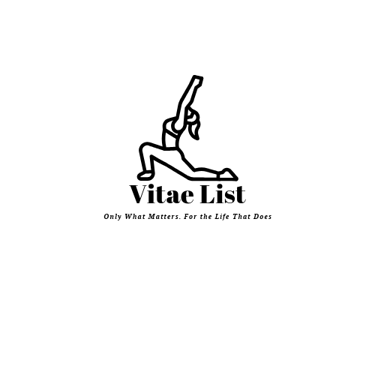Simple Ways to Improve Posture and Reduce Back Pain
Discover simple ways to improve posture and reduce back pain. Learn daily habits, stretches, and ergonomic tips to keep your spine healthy and your body moving pain-free.
WELLNESS
Vitae List
9/22/20253 min read


Simple Ways to Improve Posture and Reduce Back Pain
Disclosure: As an Amazon Associate, I earn from qualifying purchases. This post may contain affiliate links, meaning I may receive a small commission if you click a link and purchase a recommended product, at no extra cost to you.
Poor posture and back pain go hand in hand. Whether you sit at a desk all day, stand on your feet for long hours, or train hard in the gym, your spine and muscles can suffer when posture is neglected. Over time, slouching and misalignment can lead to chronic tension, reduced mobility, and even injuries.
The good news? Improving posture doesn’t have to be complicated. By making a few simple adjustments to your daily routine, you can reduce discomfort, support spinal health, and keep your body functioning at its best.
Here are practical, science-backed strategies to help you improve posture and minimize back pain.
1. Be Aware of Your Alignment
The first step is awareness. Many people don’t realize how often they slouch until they check in with themselves. A neutral spine—ears aligned with shoulders, shoulders stacked over hips, and feet grounded—helps distribute weight evenly and reduces unnecessary strain.
Quick check: Imagine a string pulling the crown of your head toward the ceiling. This lengthens the spine and naturally lifts the chest.
2. Set Up an Ergonomic Workspace
If you work at a desk, posture problems can compound quickly. An ergonomic setup keeps your spine supported and reduces strain.
Chair: Choose one with lumbar support, or add a lumbar cushion. or try a different variation.
I absolutely love this kneeling chair, so much better to sit in for long periods at the desk. Definitely check it out. NYPOT kneeling chair https://amzn.to/4gvSY1P
Screen: Keep your monitor at eye level to avoid leaning forward.
Keyboard & Mouse: Keep elbows bent at 90° and wrists neutral.
Footrest: Use one if your feet don’t touch the floor naturally.
A laptop stand and ergonomic office chair are two simple investments that make a huge difference.
3. Strengthen Postural Muscles
Weak muscles contribute to slouching. Strength training—especially for the upper back, shoulders, and core—can help you maintain upright posture effortlessly.
Key exercises:
Rows: Strengthen the upper back and improve shoulder retraction.
Planks: Build core stability for a neutral spine.
Face Pulls: Correct rounded shoulders.
Glute Bridges: Support hip alignment and reduce lower-back strain.
Even a few minutes daily can re-train your body to hold itself properly.
4. Stretch Tight Muscles
Tight chest, hip flexors, and hamstrings can pull the body into poor alignment. Incorporate daily stretches to open these areas:
Chest opener: Stand in a doorway, place your forearms on the frame, and gently press forward.
Hip flexor stretch: Kneel with one foot forward and press hips forward.
Hamstring stretch: Hinge at the hips while keeping your back straight.
Mobility tools like a foam roller can also release tension that contributes to pain.
5. Take Frequent Movement Breaks
Sitting for long periods locks your body into a rounded position. Even if your posture is good, staying still too long leads to stiffness.
Tip: Set a timer every 30–60 minutes to stand up, walk around, or stretch. These small breaks reset your posture and prevent discomfort from building up.
6. Try Posture-Support Tools
Sometimes, a little support goes a long way. Helpful accessories include:
Lumbar cushions for office chairs and car seats.
Posture corrector braces to gently remind you to sit upright.
I have used this posture corrector in the past and it worked very well and most importantly was comfortable. Luetcattus Back Brace Posture Corrector - https://amzn.to/46e6W55
Standing desks for alternating between sitting and standing.
These tools aren’t substitutes for strong muscles and good habits, but they can help retrain your body and reduce fatigue.
7. Practice Mindful Breathing
Breathing deeply through the diaphragm engages your core and helps align the ribcage over the pelvis. This reduces tension in the lower back and shoulders. A few minutes of mindful breathing each day can relax tight muscles and restore balance.
8. Prioritize Sleep Position
How you sleep also impacts posture and back health. Poor sleep posture can undo the work you do during the day.
Back sleepers: Place a pillow under your knees to reduce lumbar pressure.
Side sleepers: Use a pillow between your knees to keep hips aligned.
Mattress: Aim for medium-firm support to keep the spine neutral.
Final Thoughts
Improving posture isn’t about standing stiff and rigid—it’s about creating balance, strength, and mobility so your body feels supported throughout the day. With awareness, small adjustments, and consistent movement, you can reduce back pain and set yourself up for long-term spinal health.
Start with one or two of these strategies today, and your back will thank you tomorrow.
